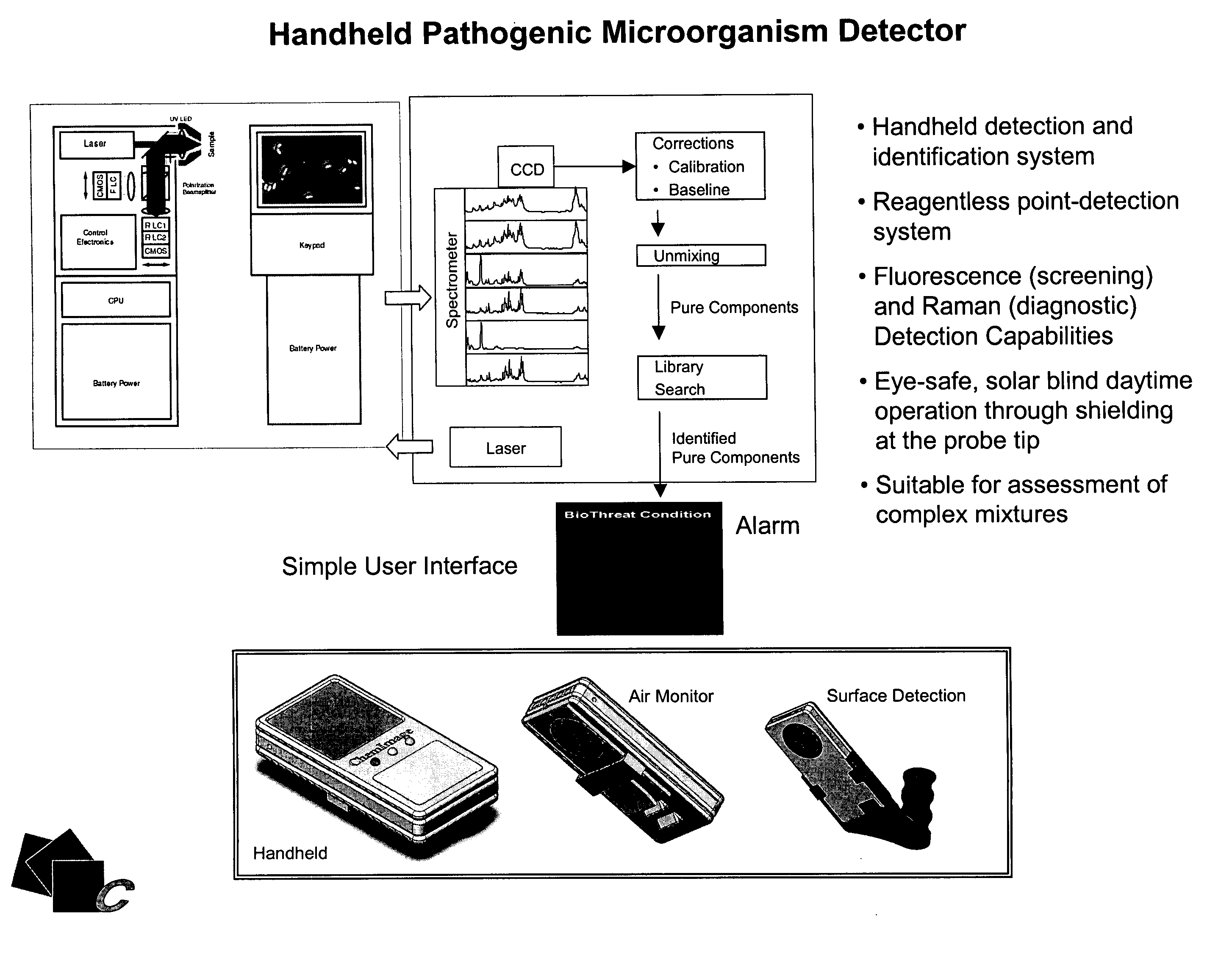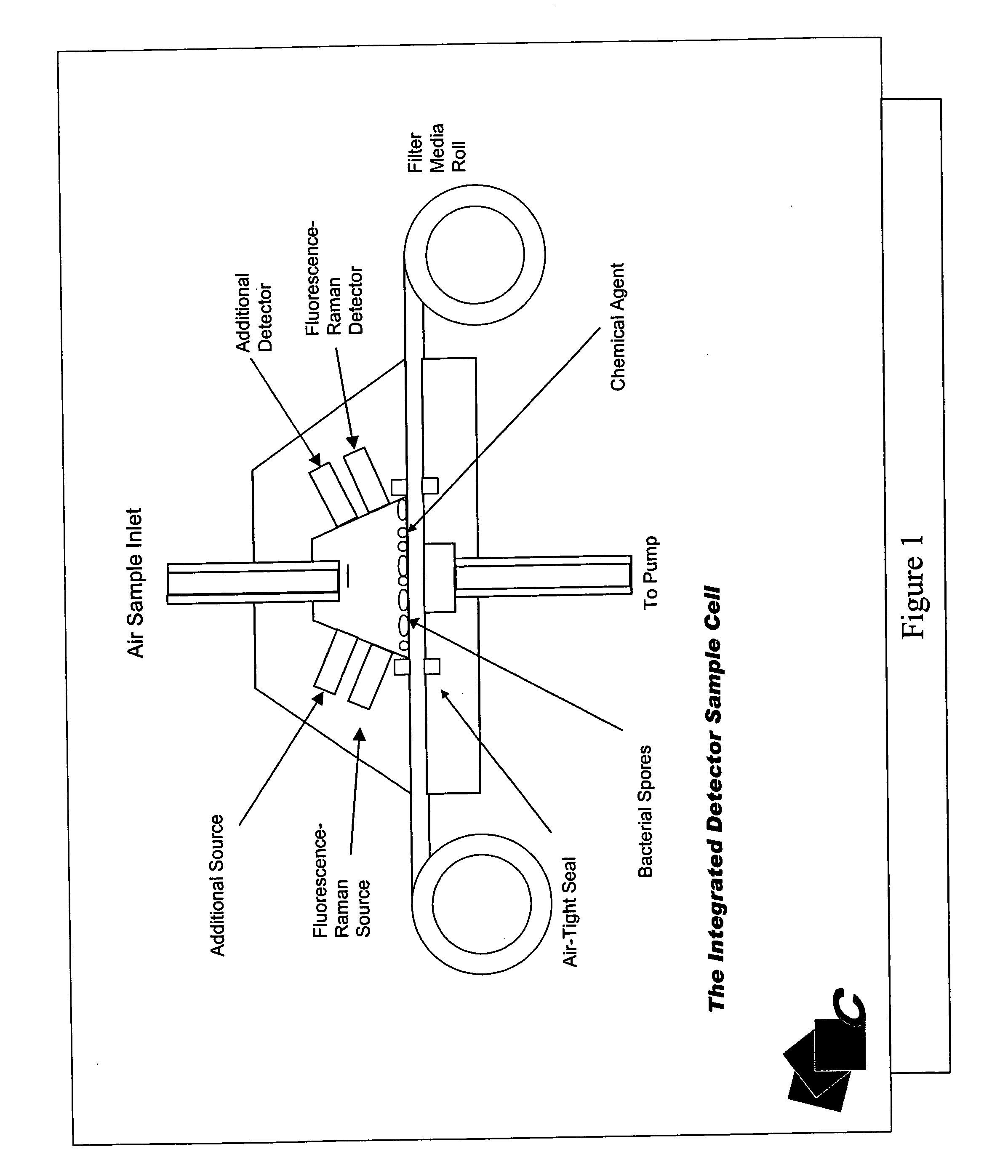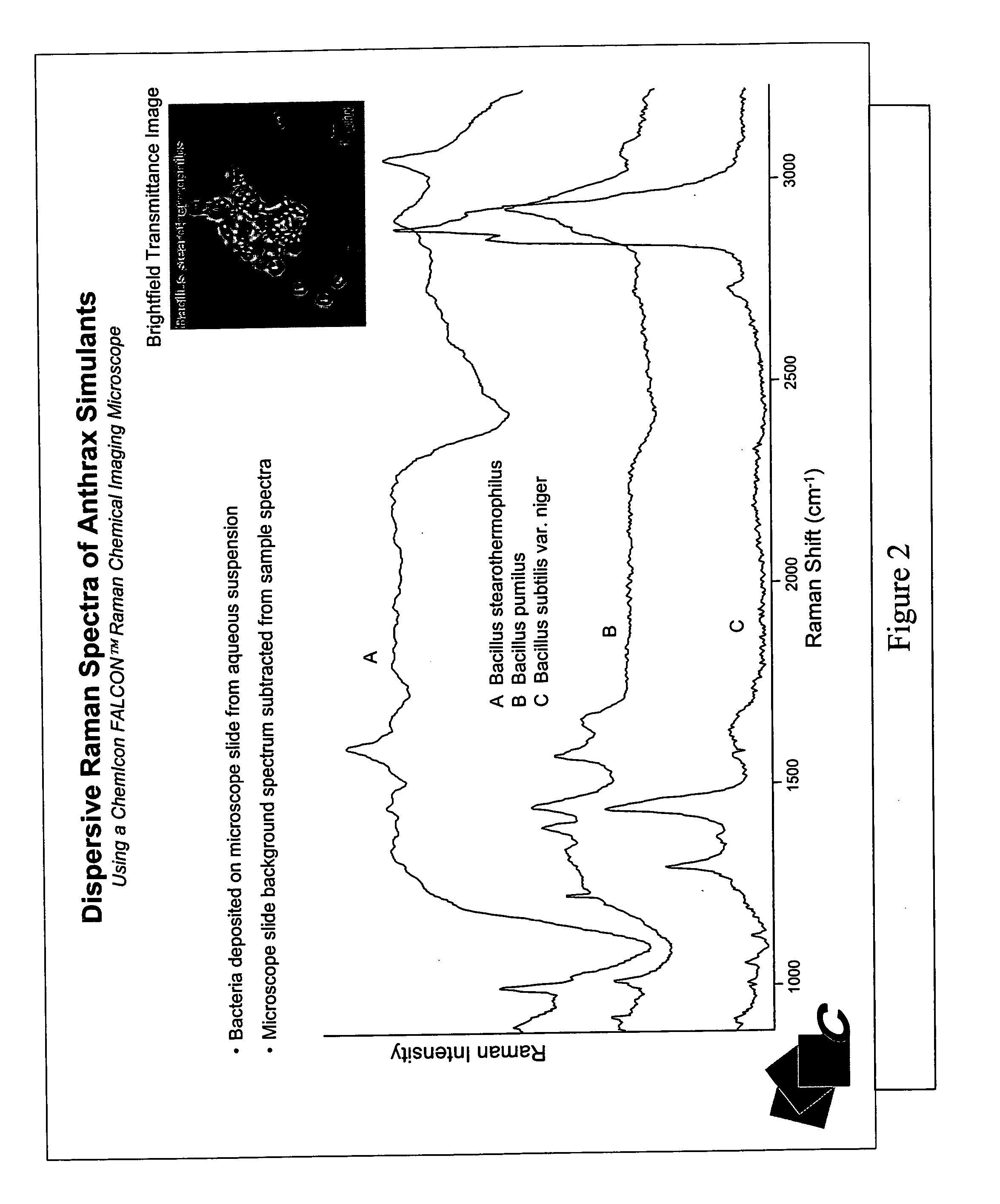Wide field method for detecting pathogenic microorganisms
a microorganism and wide field technology, applied in the field of chemical and biological analysis, can solve the problems of ineffective microorganisms, biovariability which complicates optical analysis, and organic biological molecules are far more complicated materials, so as to reduce the effect of biovariability, reduce the intensity of irradiation, and reduce optical radiation
- Summary
- Abstract
- Description
- Claims
- Application Information
AI Technical Summary
Benefits of technology
Problems solved by technology
Method used
Image
Examples
Embodiment Construction
[0060] Methods of Raman chemical imaging and spectroscopy are extensively covered in the following U.S. patents and patent applications assigned to the assignee of the present invention: U.S. Pat. No. 6,002,476; U.S. Non-Provisional application Ser. No. 09 / 619,371 filed Jul. 19, 2000; U.S. Non-Provisional application Ser. No. 09 / 800,953 filed Mar. 7, 2001; U.S. Non-Provisional application Ser. No. 09 / 976,391 filed Oct. 12, 2001; U.S. Non-Provisional application Ser. No. 10 / 185,090 filed Jun. 28, 2002; U.S. Non-Provisional application Ser. No. 10 / 184,580 filed Jun. 28, 2002; U.S. Provisional Application 60 / 144,518 filed Jul. 19, 1999; U.S. Provisional Application No. 60 / 347,806 filed Jan. 10, 2002; U.S. Provisional Application No. 60 / 187,560 filed Mar. 7, 2000; U.S. Provisional Application No. 60 / 239,969 filed Oct. 13, 2000; U.S. Provisional Application No. 60 / 301,708 filed Jun. 28, 2001; U.S. Provisional Application No. 60 / 422,604 filed Oct. 31, 2002.
[0061] The above identified pat...
PUM
| Property | Measurement | Unit |
|---|---|---|
| wavelength | aaaaa | aaaaa |
| wavelength | aaaaa | aaaaa |
| with wavelength | aaaaa | aaaaa |
Abstract
Description
Claims
Application Information
 Login to View More
Login to View More - R&D
- Intellectual Property
- Life Sciences
- Materials
- Tech Scout
- Unparalleled Data Quality
- Higher Quality Content
- 60% Fewer Hallucinations
Browse by: Latest US Patents, China's latest patents, Technical Efficacy Thesaurus, Application Domain, Technology Topic, Popular Technical Reports.
© 2025 PatSnap. All rights reserved.Legal|Privacy policy|Modern Slavery Act Transparency Statement|Sitemap|About US| Contact US: help@patsnap.com



